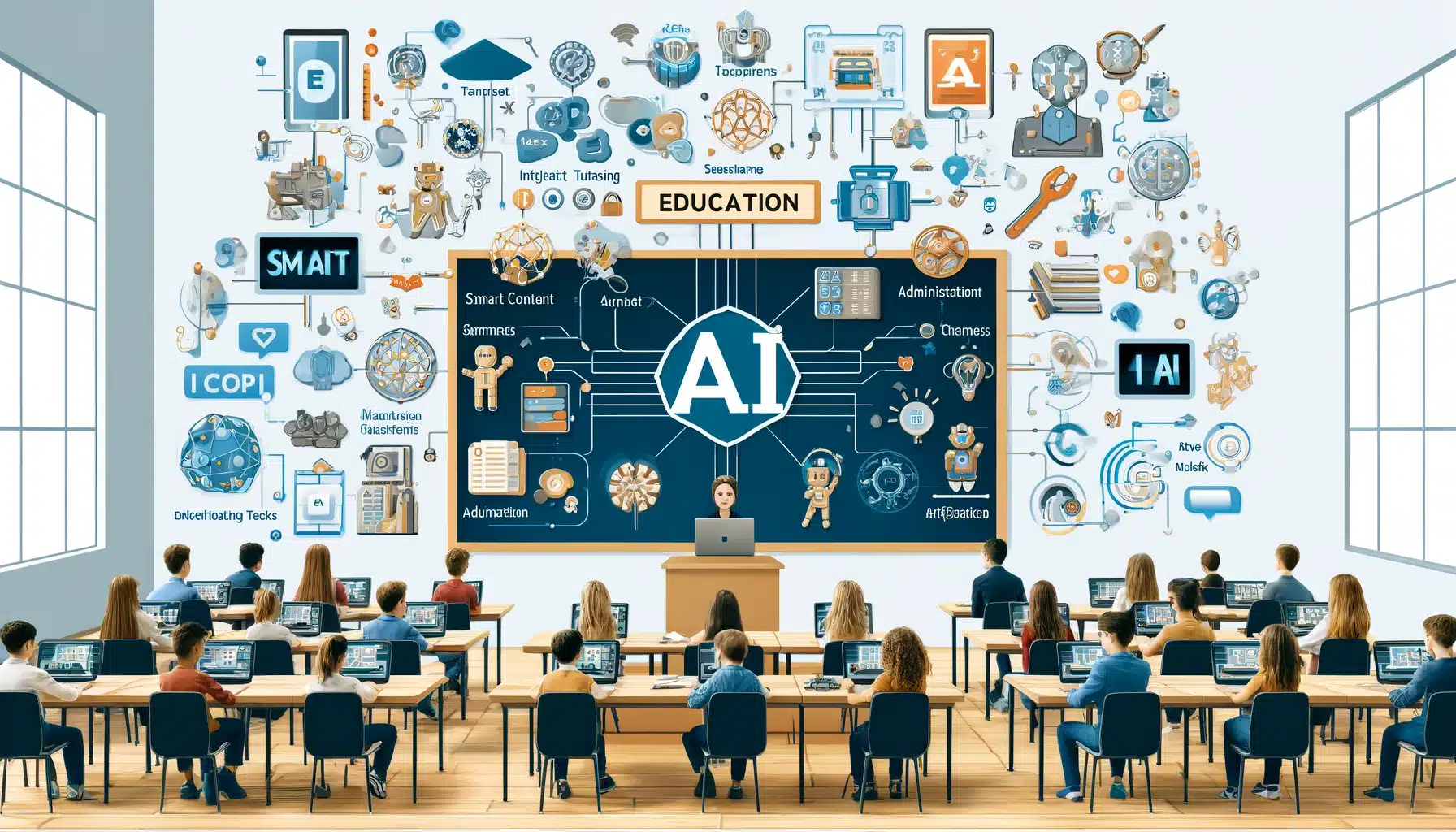Introduction
The integration of Artificial Intelligence (AI) in education is reshaping how teachers instruct and how students learn. AI offers tools that provide personalized learning experiences, automate administrative tasks, and engage students more effectively. This article highlights five AI education tools that are gaining traction among educators for their ability to enhance classroom experiences and boost student engagement.
The Rise of AI in Education
AI technologies are being increasingly adopted in classrooms to provide personalized learning experiences, automate administrative tasks, and offer intelligent tutoring. These tools are designed to adapt to individual student needs, making learning more efficient and enjoyable.
Historical Context
AI in education began with simple tutoring systems and has now evolved into sophisticated platforms capable of real-time feedback and adaptive learning. Early AI tools focused on basic educational tasks, but advances in machine learning have expanded their capabilities significantly.
Current Trends
Today’s AI tools are more interactive and capable of integrating with various educational technologies. They provide real-time analytics, personalized content, and even support for teachers in planning and delivering lessons.
Top 5 AI Education Tools Loved by Teachers
1. Smart Content
Smart content refers to digital learning materials that can be customized to fit each student’s learning pace and style. This includes interactive textbooks, digital curriculums, and personalized learning modules.
Features:
- Adaptive learning paths
- Interactive exercises
- Real-time progress tracking
Example:
- Case Study: A middle school in California implemented AI-driven smart content, resulting in a 20% increase in student engagement and improved test scores. Teachers reported that students were more motivated and better able to grasp complex concepts.
2. Intelligent Tutoring Systems
These systems provide students with immediate feedback and personalized instruction, similar to one-on-one tutoring sessions. They can identify learning gaps and tailor lessons to address them.
Features:
- Personalized learning experiences
- Instant feedback and corrections
- Progress monitoring
Example:
- Case Study: An AI tutoring system helped a struggling math student improve their grades by providing customized practice problems and feedback. The student went from failing grades to achieving a B average within a semester.
3. Automated Administrative Tasks
AI can handle repetitive administrative tasks such as grading, attendance tracking, and scheduling, freeing up teachers to focus more on instruction and student interaction.
Features:
- Automated grading
- Attendance tracking
- Scheduling and reminders
Example:
- Case Study: A high school in New York adopted an AI grading system, reducing the grading workload by 50% and allowing teachers to dedicate more time to lesson planning. This resulted in more creative and engaging classroom activities.
4. Virtual Classrooms and Online Learning Platforms
AI-powered virtual classrooms facilitate remote learning by providing interactive and engaging educational experiences. These platforms often include AI-driven features like automated assessments and personalized feedback.
Features:
- Interactive virtual environments
- Automated assessments
- Personalized learning paths
Example:
- Case Study: During the pandemic, a virtual classroom platform enabled seamless remote learning, ensuring continuity in education despite school closures. The platform’s AI features helped maintain high levels of student engagement and performance.
5. Predictive Analytics
AI can analyze student performance data to predict future outcomes and identify students at risk of falling behind. This allows teachers to intervene early and provide additional support where needed.
Features:
- Performance analytics
- Early warning systems
- Data-driven interventions
Example:
- Case Study: A school district used predictive analytics to identify at-risk students, leading to targeted interventions that improved overall graduation rates. Teachers were able to focus resources on students who needed the most help, resulting in better outcomes for the entire student body.
Benefits of AI in Education
- Personalization: AI customizes learning experiences to meet the unique needs of each student.
- Efficiency: Automating administrative tasks frees up more time for teaching and learning.
- Engagement: Interactive and adaptive learning tools increase student engagement and motivation.
- Support: AI provides timely feedback and identifies areas where students need extra help.
Challenges and Considerations
While AI offers numerous benefits, there are also challenges to consider:
- Privacy: Ensuring the security of student data is paramount.
- Equity: Access to AI tools must be equitable across different socio-economic groups.
- Teacher Training: Educators need proper training to effectively integrate AI tools into their teaching.
Privacy Concerns:
- Data breaches and misuse of personal information are significant concerns. Schools must implement robust security measures and comply with data protection regulations.
Equity Issues:
- There is a risk that students from underprivileged backgrounds may not have the same access to AI tools. Ensuring equitable access to technology is crucial for preventing widening educational disparities.
Training Needs:
- Teachers need ongoing professional development to stay updated with AI technologies and effectively integrate them into their classrooms. Training programs should focus on both technical skills and pedagogical strategies.
Q&A: Addressing Common Concerns
Q: How does AI personalize learning? A: AI analyzes each student’s learning patterns and adapts content and pacing to meet their individual needs, providing a customized learning experience.
Q: What are the privacy concerns associated with AI in education? A: The primary concern is protecting student data. Schools must ensure that AI tools comply with data protection regulations and have robust security measures in place.
Q: How can teachers be trained to use AI tools effectively? A: Professional development programs and ongoing support are essential for teachers to learn how to integrate AI tools into their classrooms effectively.
Future Trends in AI Education
1. Increased Integration:
- AI will become more integrated into all aspects of education, from curriculum development to student assessment. This will create more seamless and cohesive learning experiences.
2. Advanced Analytics:
- AI-driven analytics will provide deeper insights into student performance and learning needs, allowing for more targeted and effective interventions.
3. Collaborative Learning:
- AI tools will facilitate collaborative learning by connecting students and teachers in new ways, enabling more interactive and engaging educational experiences.
4. Ethical AI:
- There will be a growing focus on developing ethical AI systems that prioritize fairness, transparency, and accountability in education.
Conclusion
AI is revolutionizing education by providing tools that enhance learning experiences and improve student outcomes. By understanding and leveraging these innovative technologies, educators can create more engaging, personalized, and efficient learning environments. As AI continues to evolve, it will play an increasingly vital role in shaping the future of education.
Educators and institutions must address challenges such as privacy, equity, and teacher training to fully realize the benefits of AI in education. By doing so, they can ensure that AI-driven tools are used effectively and responsibly to enhance teaching and learning.


